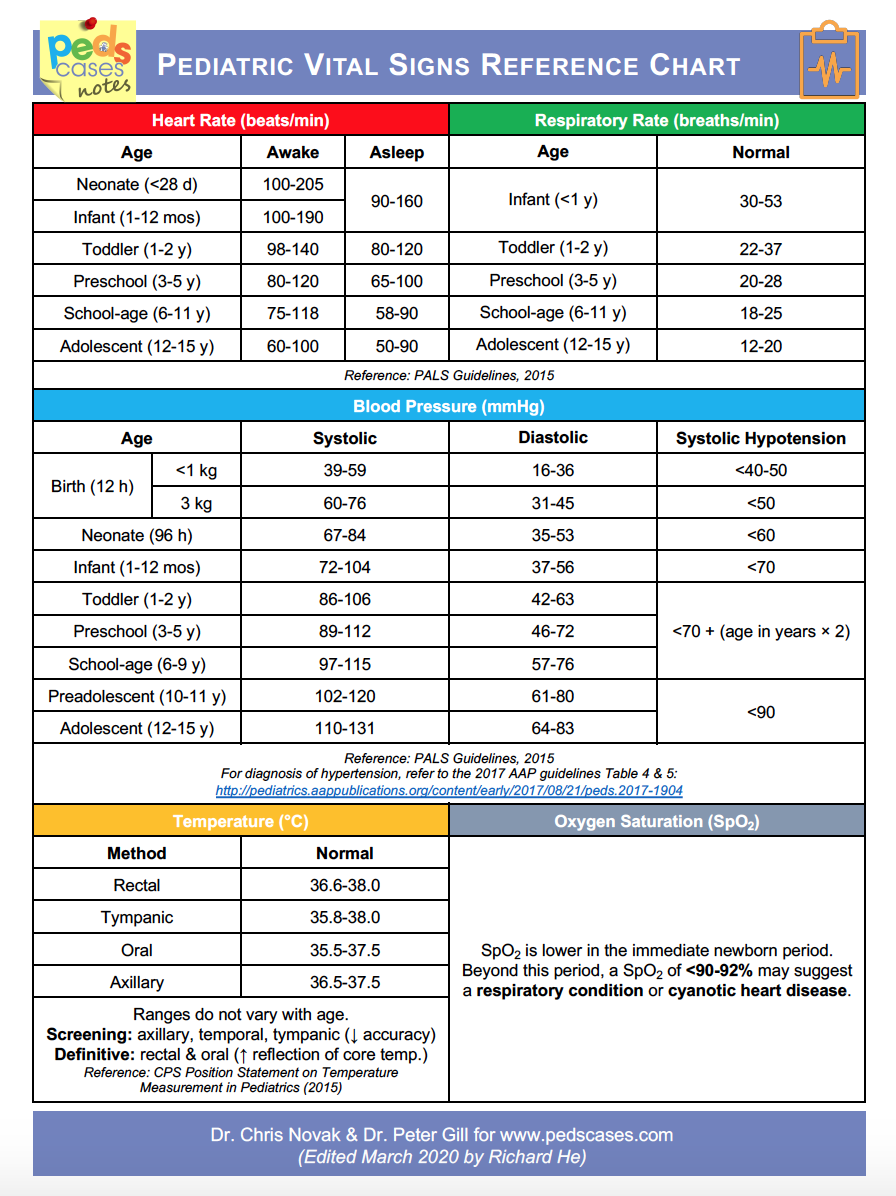Ah, my fellow parents and caregivers, gather ‘round! Today, I’m here to share with you some valuable knowledge about pediatric vital signs. Now, I understand that keeping track of your little one’s health can be quite a task, but fear not, for I have got you covered.
Let’s Talk Vital Signs!
Before we dive into the specifics, it’s crucial to understand what vital signs are and why they are significant. Vital signs are a set of measurements that provide valuable insights into a person’s overall health and well-being. They help us evaluate various bodily functions and detect any potential issues or abnormalities.
 First up, we have the heart rate. This refers to the number of times your child’s heart beats per minute. In newborns, a heart rate between 100 and 160 beats per minute is considered normal. However, as they grow older, the heart rate typically decreases. For children aged 1 to 2 years, a heart rate of 90 to 140 beats per minute is within the normal range.
First up, we have the heart rate. This refers to the number of times your child’s heart beats per minute. In newborns, a heart rate between 100 and 160 beats per minute is considered normal. However, as they grow older, the heart rate typically decreases. For children aged 1 to 2 years, a heart rate of 90 to 140 beats per minute is within the normal range.
 Next on the list is respiratory rate, which measures the number of breaths your child takes in a minute. For infants, a respiratory rate of 30 to 60 breaths per minute is considered normal. As they grow older, the rate decreases. For children aged 1 to 5 years, a respiratory rate of 20 to 30 breaths per minute is within the normal range.
Next on the list is respiratory rate, which measures the number of breaths your child takes in a minute. For infants, a respiratory rate of 30 to 60 breaths per minute is considered normal. As they grow older, the rate decreases. For children aged 1 to 5 years, a respiratory rate of 20 to 30 breaths per minute is within the normal range.
 We cannot forget about blood pressure! Blood pressure is the force exerted by your child’s blood on the walls of their arteries. It is measured using two numbers – systolic pressure over diastolic pressure. A systolic pressure of less than 120 mm Hg and a diastolic pressure of less than 80 mm Hg are considered normal for children.
We cannot forget about blood pressure! Blood pressure is the force exerted by your child’s blood on the walls of their arteries. It is measured using two numbers – systolic pressure over diastolic pressure. A systolic pressure of less than 120 mm Hg and a diastolic pressure of less than 80 mm Hg are considered normal for children.
The last of the vital signs we’ll explore is body temperature. It’s essential to monitor your child’s temperature, as it can indicate whether they have a fever or are possibly experiencing an infection. For infants, a rectal temperature of 97.7°F to 100.4°F is considered normal, while for older children, an oral temperature of 97.6°F to 99.6°F is normal.
Keeping Our Little Ones Healthy
![30 Open House Sign In Sheet [Pdf, Word, Excel] For Real Estate Agent](https://4freeprintable.com/wp-content/uploads/2019/07/normal-vital-signs-you-need-to-know-in-nursing-school-click-through-free-printable-vital-sign-sheets.jpg) As caring parents, it’s vital that we stay vigilant and keep a close eye on these vital signs. Regular monitoring allows us to quickly identify any abnormalities and seek prompt medical attention when necessary. Remember, prevention is key!
As caring parents, it’s vital that we stay vigilant and keep a close eye on these vital signs. Regular monitoring allows us to quickly identify any abnormalities and seek prompt medical attention when necessary. Remember, prevention is key!
Now, you might be wondering where this valuable information comes from. Let me tell you – it’s from trusted sources in the medical field, dedicated to providing accurate healthcare information. They understand the importance of sharing knowledge with people from all walks of life, ensuring everyone can access essential information.
 By arming ourselves with this information, we become empowered advocates for our children’s health. Remember, my dear parents and caregivers, each child is unique, and it’s essential to consult a healthcare professional if you ever have concerns about your child’s vital signs.
By arming ourselves with this information, we become empowered advocates for our children’s health. Remember, my dear parents and caregivers, each child is unique, and it’s essential to consult a healthcare professional if you ever have concerns about your child’s vital signs.
Now go forth, armed with knowledge, and keep those little hearts beating and those breaths flowing. Stay vigilant, stay informed, and most importantly, keep those precious little ones safe and healthy!